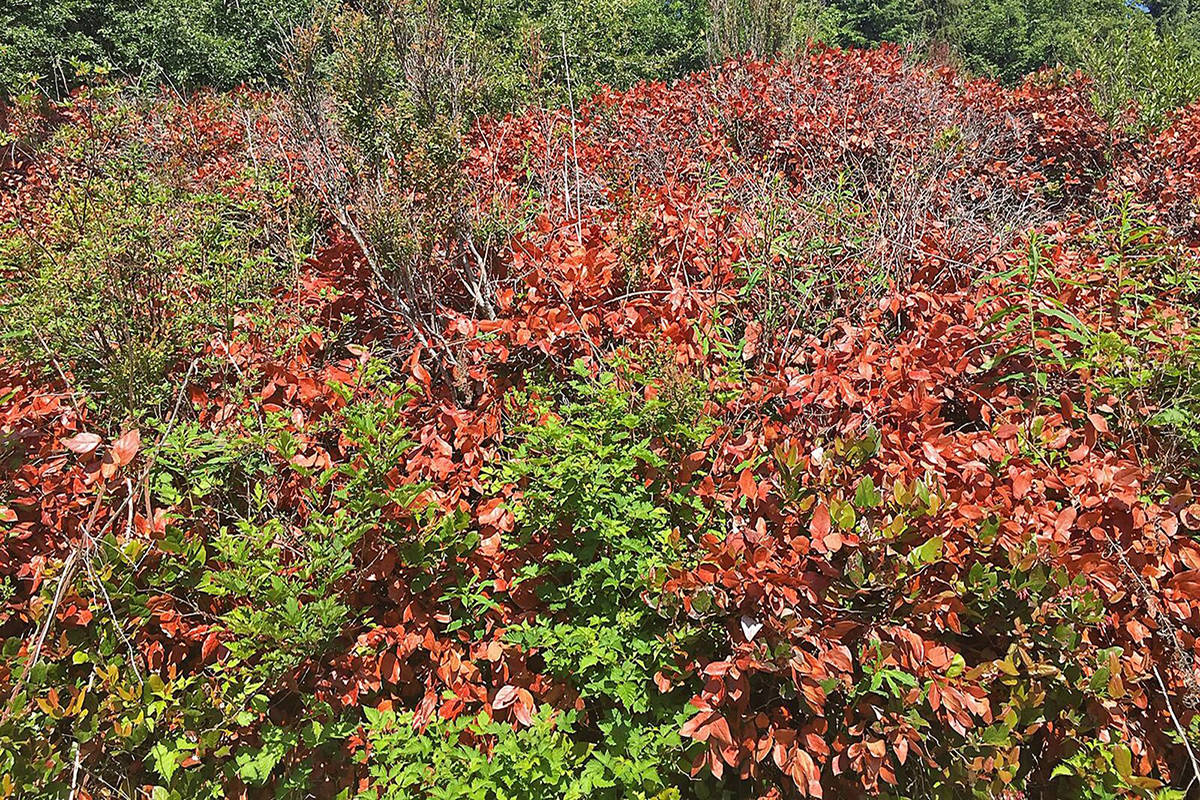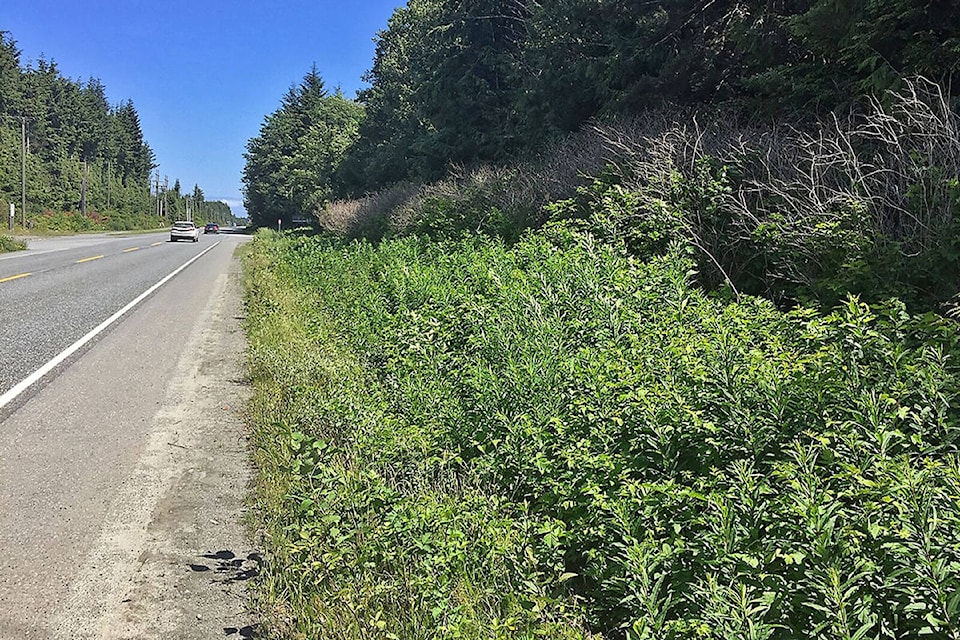The salal, Salmonberry and Thimbleberry, once considered the hardy perennials of the woods, a traditional source of food and the foundational shrubs of our North Island woods, are in trouble and dying off in numbers that are catching many by surprise.
In a recent interview with the CBC, Richard Hamelin, a professor of forest pathology at UBC’s Faculty of Forestry, suggested unusual weather events may be the leading cause.
Locally, Andrew Ashford, District Manager for BC’s North Island/Central Coast Natural Resources District also suggests climate may be the issue. Mr. Ashford noted how the year got off to a bad start stating, “We had a dry January, an unusually cold February and another dry month in March. Conditions that led to freezing and drying out of the root systems which resulted in the subsequent death and decline of many of these perennial berry shrubs.”
Climate is certainly the prime suspect but for now, scientists and forestry professionals can only confirm that disease is not the cause.
According to officials, the die off is prevalent throughout the Island but at a local level appears to be more widespread in the Campbell River area than here in the North Island region.
Port McNeill expert in the collection and use of non-timber products such as berries and mushrooms, Graham MacDonald agrees with Ashford’s assessment. MacDonald confirmed our climate and forests are, “heading into a change.”
Using moss as just one example, he went on to explain, “Moss, which can hold 25 times the water (volume to size) of any other plant in the forest is the driest I’ve ever seen it.”
Both MacDonald and Ashford are concerned about these changes to the understory of our forest’s ecosystem and the impact they are having on all species of plants and animals, including man.
Andrew Ashford explained how the reduction in living plants and resulting depletion in flowers, can influence the health and wellbeing of tiny pollinators such as the hummingbird or bee.
“Without their normal springtime source of food, they can face hard times when it comes to survival.” He went on to describe the significant influence these tiny birds and insects have on the lives of major omnivores such as the bear, saying, “With a diminished supply of berries and natural foods, bears may be forced to turn more and more to urban areas in search of food.” Mr. Ashford also pointed to the increasingly important role of urban gardens, explain ing how they may become the lifeboat for pollinators that used to rely on the natural forest.
According to MacDonald, the search for food extends to man as well and any changes in the foundation of our ecosystem would be quickly felt in the local economy.
Describing the significant role and economic impact of the non-timber use of our forests and the 240 forage products it produces, Mr. MacDonald pointed to the mushroom industry as an example of the importance foraging plays in our local economy. “Wild mushroom harvesting employs 50 to 60 people,” he said, adding, “and as an industry, generates approximately $500,000 in local economic activity.”
When asked if the die off is a sneak preview of the impact of a changing climate on our ecosystem, the experts agree climate is likely a factor and this may indeed be a look into the future. At the moment, recovery is still possible and as Andrew Ashford points out, a return to normal wet weather patterns would see these plant communities recover in two to four years time.
- Bill McQuarrie article

